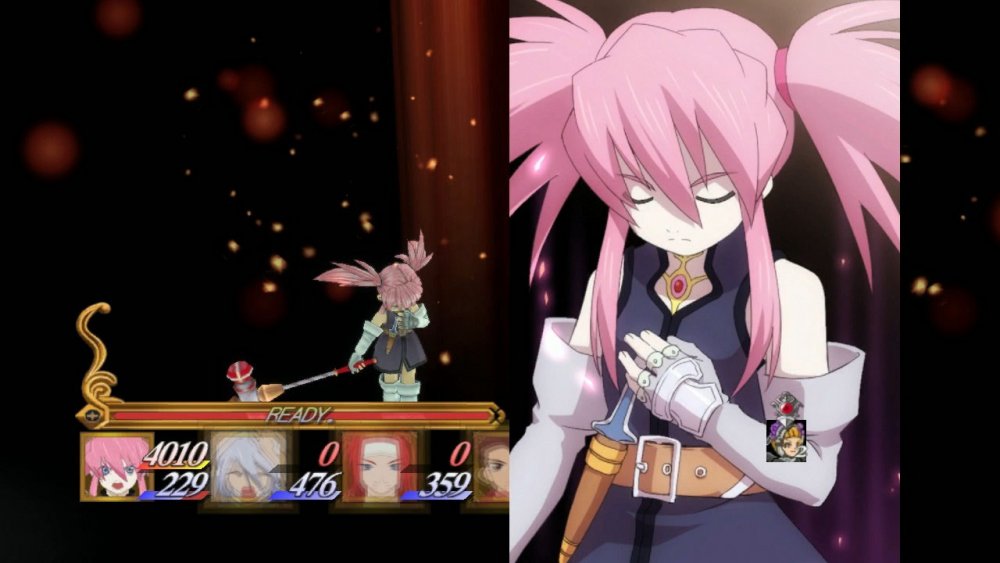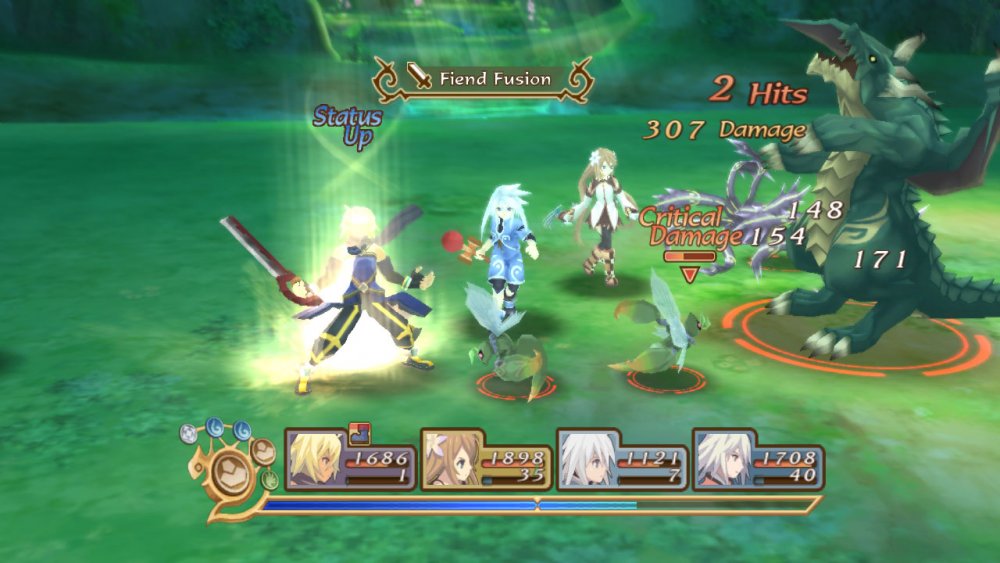As far as how ToS and ToS: Dawn stand up to the test of time, I have mixed feelings. ToS was the first Tales game I ever played. I only managed to get about 10 hours in due to a mixture of its lack of guidance, sometimes challenging difficulty, and protagonists that I personally found to be dull. I liked it alright back then, but not enough to invest more time than that. After coming back to ToS as a Tales fan with several more Tales games under my belt, I certainly have more patience for it, but I can certainly tell that this is a Tales game that is a decade old. Non-franchise fans probably wouldn’t be able to distinguish many differences between last year’s Tales of Xillia and the ToS found in ToS Chronicles, but I certainly feel the difference.

One thing that made me and my partner fall in love with the Tales series was the free run ability in battle, first found in Tales of Abyss. This allows characters to use screen depth to navigate the battlefield, so everyone isn’t automatically on the same plane like in fighting game. Every other major Tales game since then has included this feature. This feature is lacking in ToS, and boy, can I ever feel it. Combat also feel much less fluid and synergistic than newer Tales games. Things just feel clunkier. I’m certainly not holding these things against ToS Chronicles - I had no illusions that things were going to be any different
The ToS Chronicles version of ToS: Dawn of the New World does have free run, since its Wii version did. If I’m going to be brutally honest, ToS: Dawn is pretty loudly hated on by Tales fans. Personally, I find it to still be enjoyable, though I acknowledge its flaws. If ToS Chronicles is a love letter to series fans, ToS: Dawn was an attempted love letter - and it was heavily spurned for its advances. ToS: Dawn only really features two human protagonists with cameos dropping in from the first ToS. Often, the party will be filled out with monsters you capture and train (a little bit like Pokemon, almost identical to the system found in Final Fantasy XIII-2), which is quite a departure from the usual Tales formula. ToS: Dawn is only about five years old, so it doesn’t feel as clunky as ToS; however, I’m certainly not going to say it’s one of my favorite entries in the series.

All in all, I think that ToS Chronicles is remarkably successful in its purpose: to graphically update Tales of Symphonia, put it on a modern and familiar console, and package it with additional stuff it received in other territories. ToS: Dawn, while a complete game in its own right, is clearly not the emphasis here, but it’s nice that they included it for completeness. As I said before, this is a great purchase for anyone who wants to either replay ToS, or loves Tales games and missed out on the Gamecube version of ToS. There’s hours upon hours of content here, and a decent story (as far as ToS goes). ToS: Dawn provides answers to some questions about what happened to the world and characters after the end of ToS, as well as trying out a new monster-capturing mechanic which some may enjoy. For those who are looking into cracking into the series, this may still be a decent starting point; however, I might personally recommend starting with a newer Tales game and then working your way back to this one a Tales game or two later.
Tales of Symphonia Chronicles supports 4-player local co-op in ToS and technically in ToS: Dawn of the New World as well; however, ToS: Dawn is better played only up to 2-player local co-op, since monsters cannot be controlled by players, and other controllable human characters (besides Marta and Emil) drop in and out of the party unreliably.